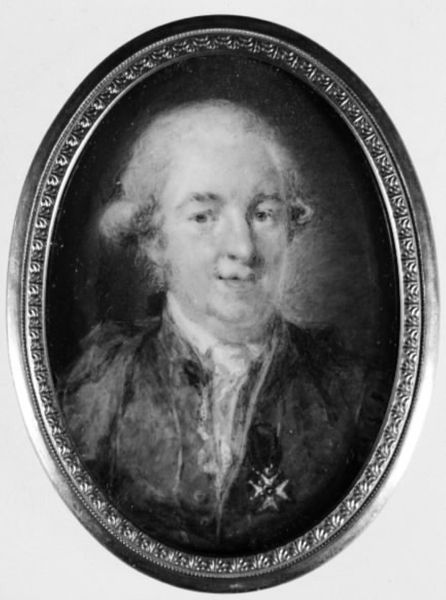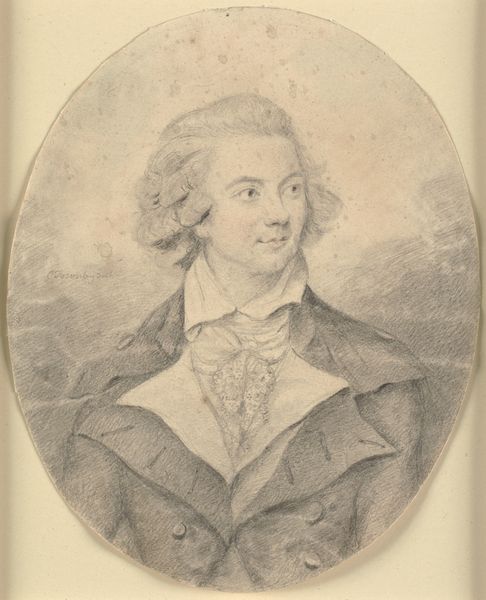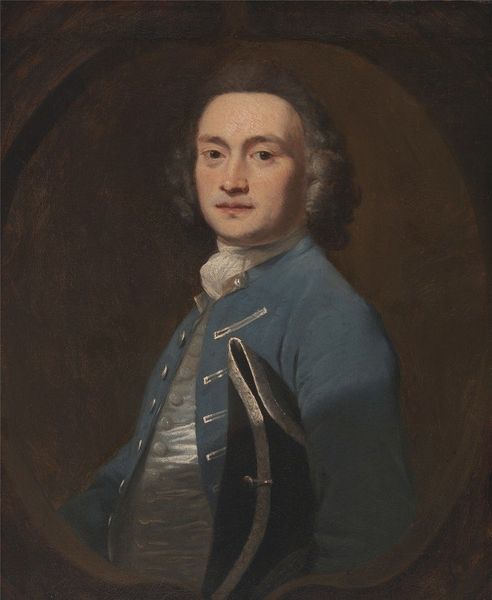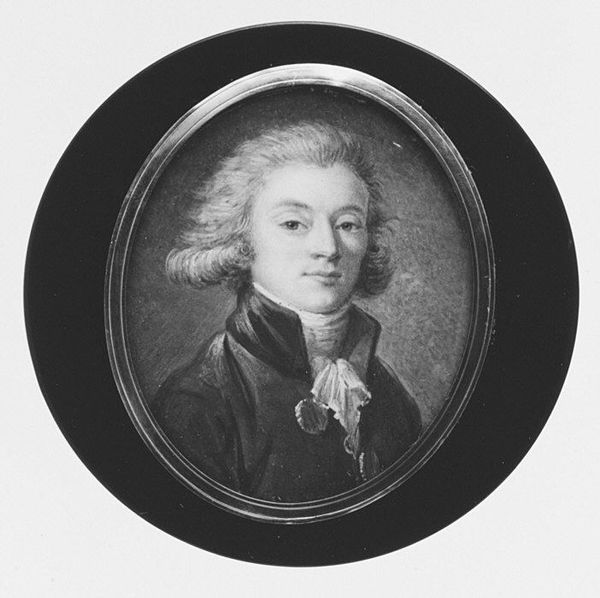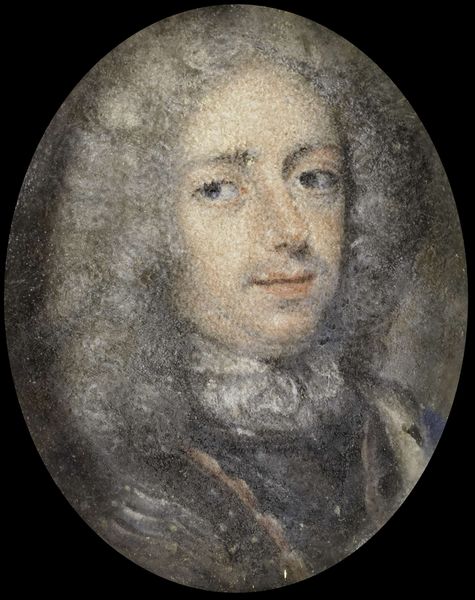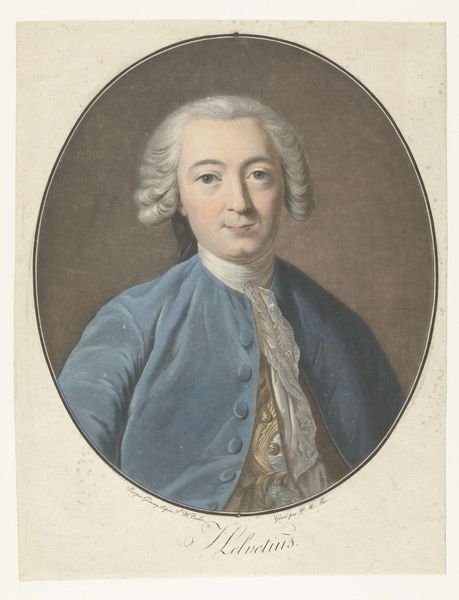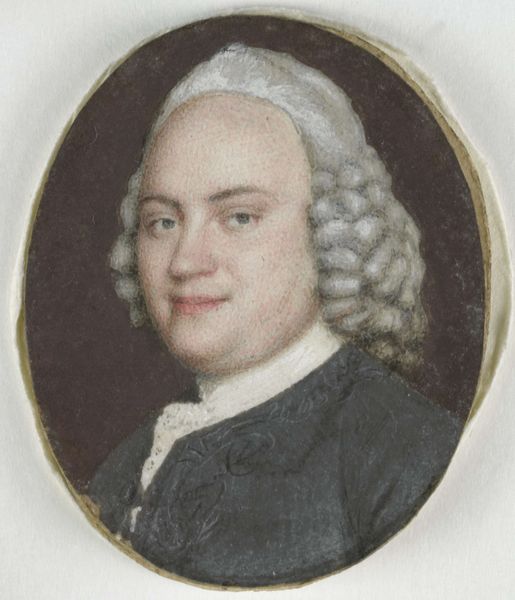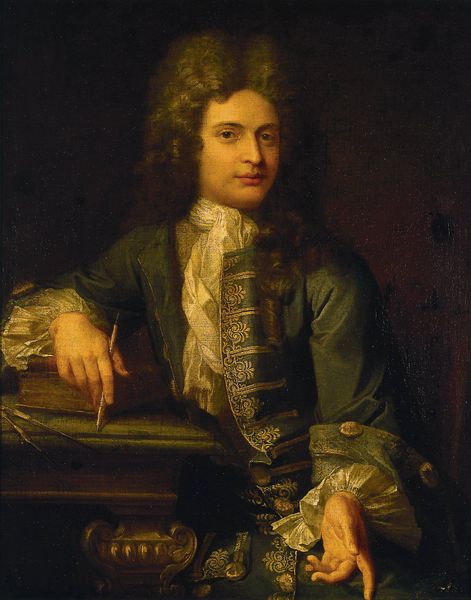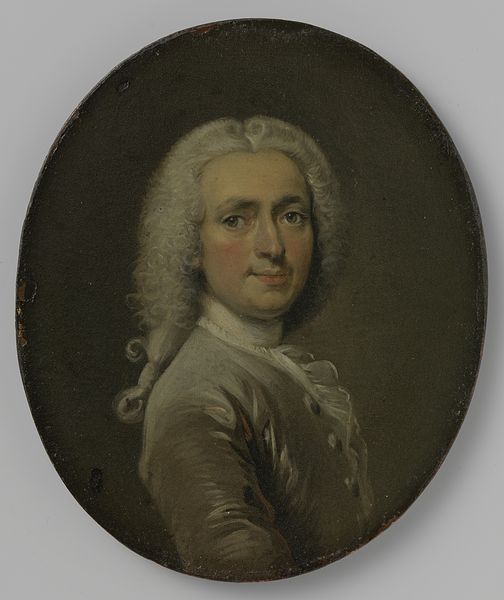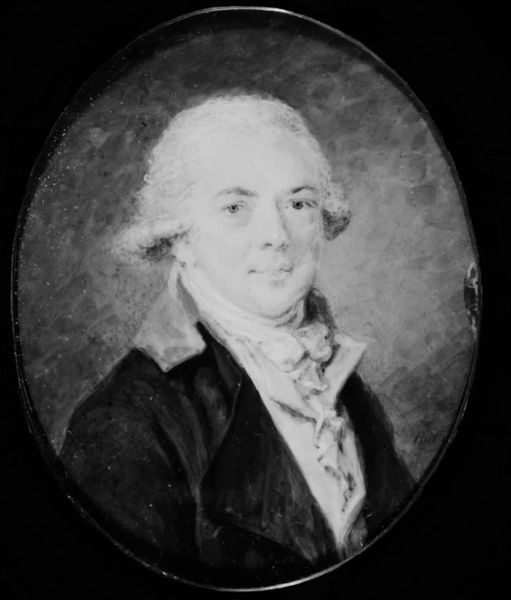
Portrait of Christoffel Bernhard Julius von Schwartz (1676-1754), Lord of Ansen en Glinthuis 1690 - 1710
0:00
0:00
Dimensions: height 7 cm, width 5 cm, height 10.5 cm, width 7.5 cm, depth 1.2 cm
Copyright: Rijks Museum: Open Domain
Curator: Welcome. Here we have a portrait of Christoffel Bernhard Julius von Schwartz, Lord of Ansen en Glinthuis. It’s estimated to have been created between 1690 and 1710. Editor: What immediately strikes me is its almost ethereal quality. The pale face, the light catching the lace... it's quite evocative. It speaks volumes about privilege, doesn't it? Curator: Indeed. The artist, Rosalba Carriera, beautifully captures the Rococo aesthetic. Look at the soft lines, the delicate watercolor, the almost jewel-like quality of the pigment. The texture of the lace is suggested so deftly, merely a few skillful applications of paint suggesting such detail. Editor: It’s fascinating how the presentation of nobility, in art and in life, serves to reinforce their social standing. His gaze seems carefully calculated, aloof and composed all at once. This is not simply a likeness, it's a statement of power during an era marked by massive class disparity. What do you make of his presentation of self? Curator: Consider the semiotics of the piece. The flowing wig signifies status, the tailored coat hints at wealth, the slight suggestion of pink could represent both vibrancy and access to luxury. Carriera expertly employs form to depict not just appearance, but identity and social position as well. The details invite careful decoding and it is very impressive. Editor: Exactly, and to what end? To uphold existing structures! This portrait serves as a powerful emblem of its era, a reminder that aesthetics can be inherently political, a tool in solidifying and maintaining hierarchical social structures and power relations. We should not be admiring aesthetic qualities alone. Curator: However, viewing this portrait without understanding its compositional merits would be like reading a text without recognizing its grammar. There's the balance of color, the rhythm created by the curves of the wig and coat, even the careful management of space. Carriera achieves a striking visual harmony, I must say. Editor: I understand the value in visual analysis, but it shouldn’t be conducted in a vacuum. I hope this artwork sparks thoughtful consideration of history and politics, inspiring reflection on both the past and the present. Curator: A perspective well worth holding in mind as we view these treasures, alongside its careful construction and intrinsic design choices. Thank you for these insightful thoughts.
Comments
No comments
Be the first to comment and join the conversation on the ultimate creative platform.
